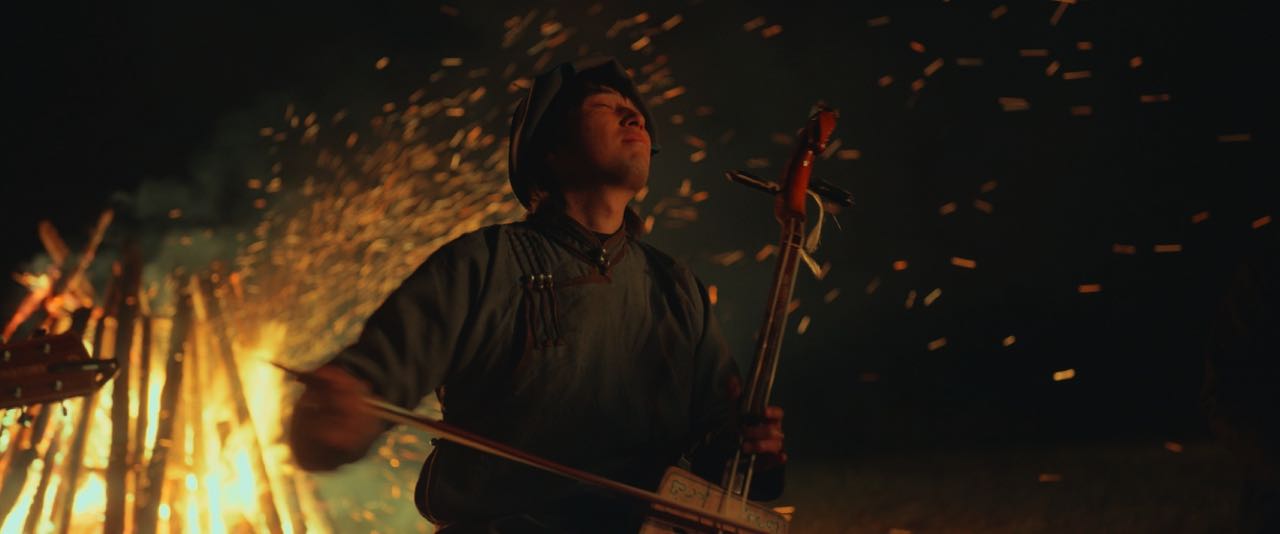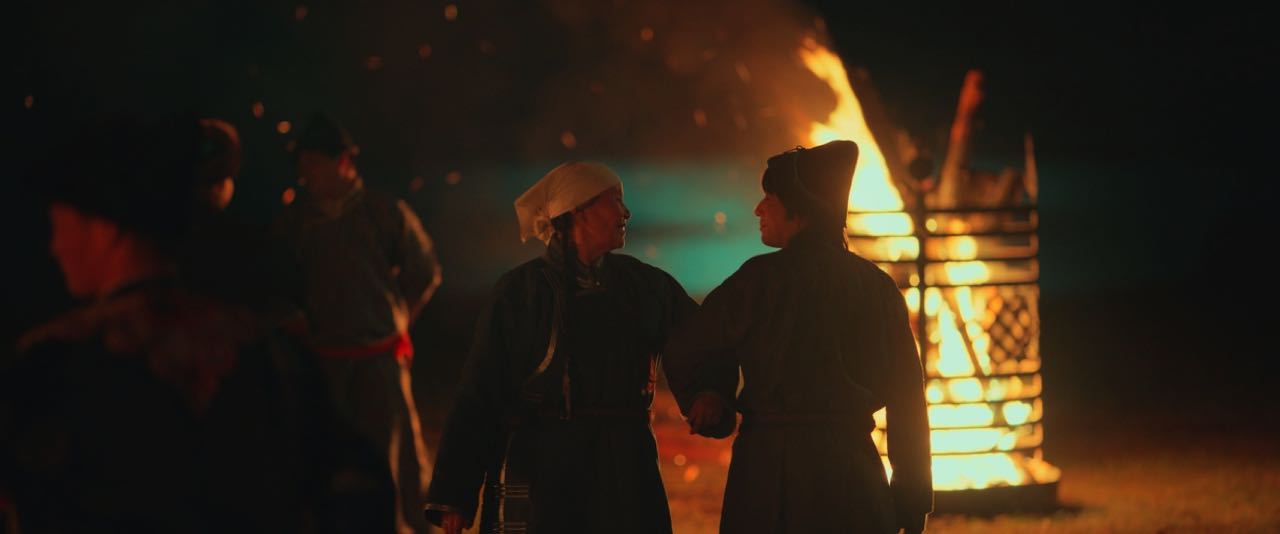by Brian Hioe
語言:
English
Photo courtesy of Bad Rabbit (Shanghai) Pictures Co., Ltd.
This is a No Man is an Island film review written in collaboration with Cinema Escapist as part of coverage of the 2023 Bucheon International Fantastic Film Festival (BIFAN). Keep an eye out for more!
THE CORD OF LIFE is a triumph. The movie follows Inner Mongolian electronic musician Alus, who starts off the film performing in Beijing before receiving a strange phone call from his mother.
Alus becomes convinced that his mother, who has Alzheimer’s and is increasingly failing to recognize him, would be better off spending her twilight days in the pastoral lands she grew up in. As such, he brings her back with him to live in the Inner Mongolian countryside.
However, Alus increasingly finds his mother is prone to running off, and begins to tie her to himself with a long rope. This, then, is the titular “cord of life.” The term evokes the umbilical cord, in that now Alus’ mother has reverted back to an infant-like state and requires her son’s care.

Photo courtesy of Bad Rabbit (Shanghai) Pictures Co., Ltd.
But The Cord of Life is about far more than just a son’s struggle to take care of his elderly mother. Alus also wants to seek traditional sounds for his music in the countryside. In particular, Alus is a modernizer who seeks to recast tradition for contemporary times. Though Alus can play a number of traditional Mongolian instruments, his background in electronic music is framed as a way in which traditional sounds can be brought into modern times, expanding the vocabulary of Mongolian music beyond a static tradition and allowing it to find new audiences. Alus is shown as integrating traditional rhythms and instruments into his musical practice.
This plays into Alus’ relationship with his mother. The film suggests that Alus’ musical affinities come from his mother, a traditional instrumentalist. As such, the relationship between Alus and his elderly mother serves as a metaphor for the relationship between tradition and modernity.
Director Qiao Sixue, who is herself Inner Mongolian, has a personal stake in this question of how to preserve tradition. In interviews, Qiao has commented on her experiences growing up around other individuals of Mongolian descent, but being unable to speak Mongolian herself—which is interesting given the majority of The Cord of Life’s dialogue is in Mongolian.
With regard to such questions, the film avoids heavy-handed allegory, but proves to be highly attentive to nuance. There are no easy answers–whether to old age, or the weight of tradition in the modern times. Ultimately, the film arrives at an open-ended conclusion.

Photo courtesy of Bad Rabbit (Shanghai) Pictures Co., Ltd.
The dynamic between Alus, played by Inner Mongolian musician Yider, and his mother, played by award-winning inner Mongolian actress Badema, is well-realized. Most of the interactions in the film are between Alus and his mother. But though there are few other characters in the film, Cord of Life still manages to depict a strong sense of social solidarity among Inner Mongolians.
However, The Cord of Life drags on in its middle portion. At one point, a trucker crashes into Alus’ home, but this sudden intrusion of a stranger into the plot seems to have little purpose except to advance the story. This aberration aside, however, The Cord of Life conveys a naturalistic tone that periodically delves into moments of the mytho-poetic. This is to Qiao’s credit as a director.
On the whole, in spite of some flaws, The Cord of Life is a standout film. This is primarily on the basis of its strong story, which is loaded with symbolism, and how it manages to convey the lived experiences of individuals of Mongolian descent in contemporary China.



